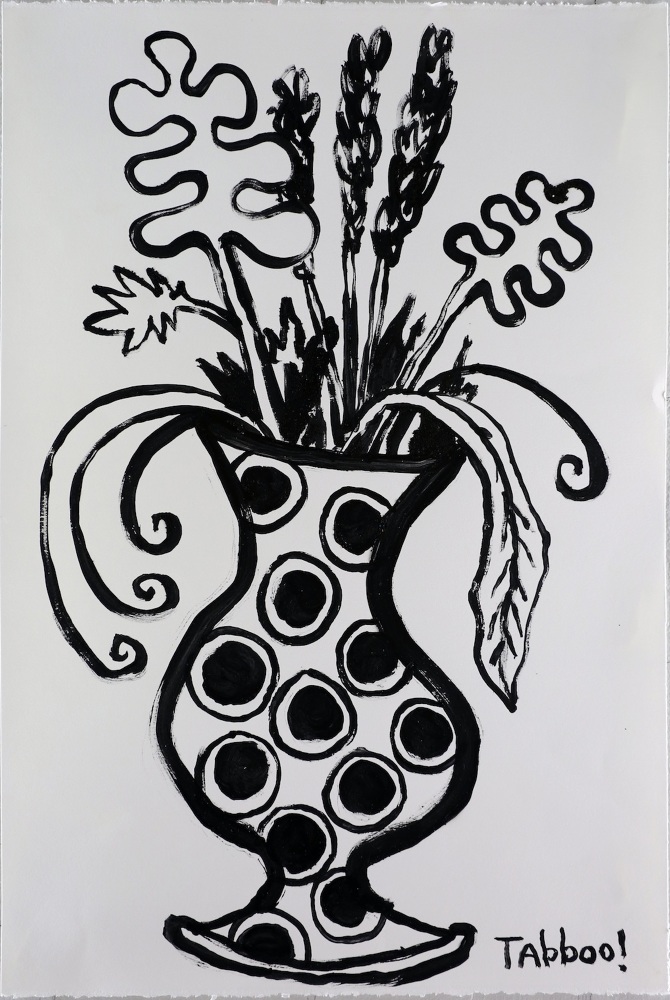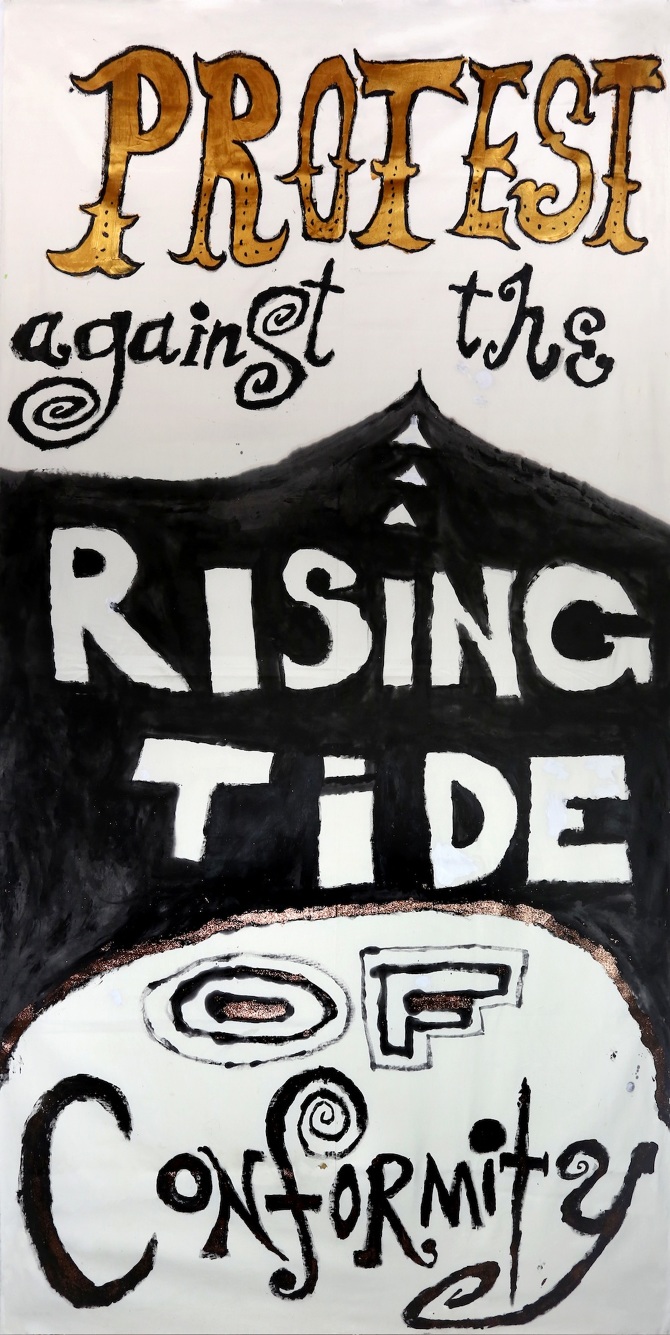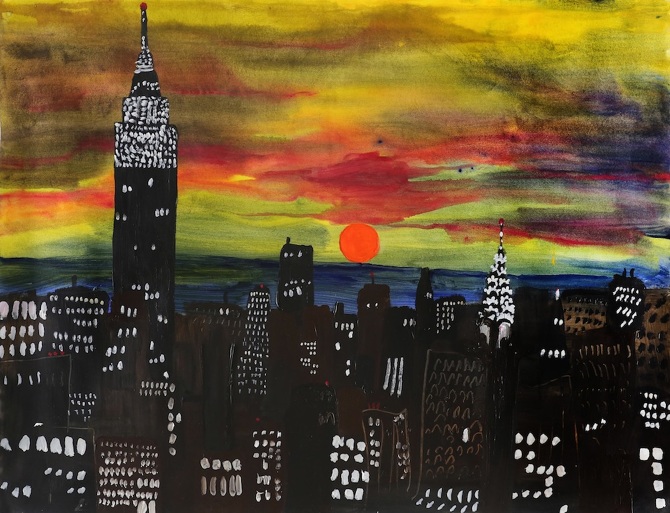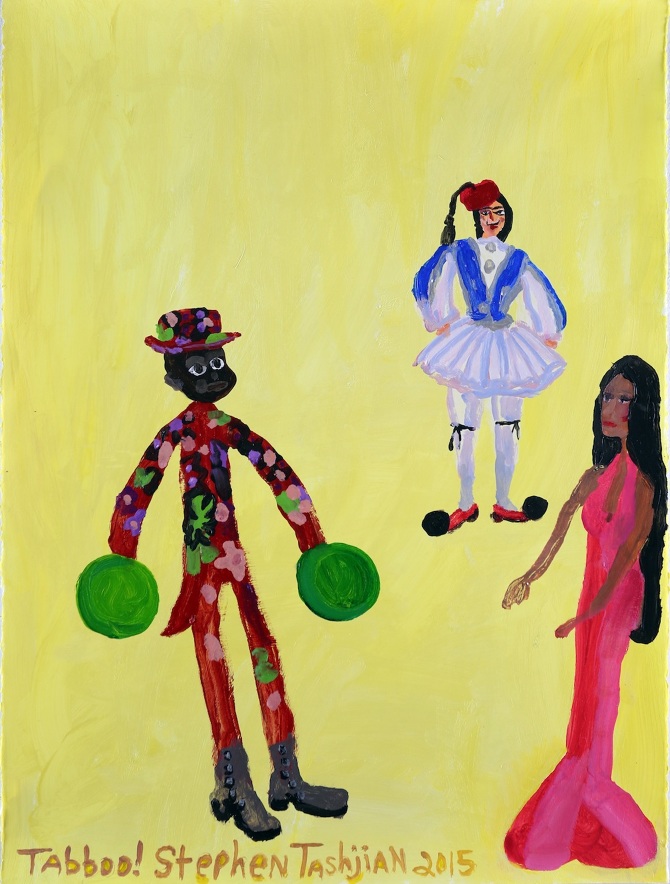Tabboo! vs. HENRY DARGER AT OUTSIDER ART FAIR 2016
HENRY DARGER & TABBOO!
January 21-24th, 2016
Outsider Art Fair New York
Metropolitan Pavilion
125 West 18th Street
New York, NY 10011
SITUATIONS presents—Tabboo! vs. Henry Darger—a presentation of artworks by two visionary, idiosyncratic, and prolific artists at the Outsider Art Fair in New York on view from January 21–24, 2016, at the Metropolitan Pavilion, 125 West 18th Street, Booth #3.
In this double feature, SITUATIONS juxtaposes drawings, paintings, and collages by the legendary underground artist and drag performer Tabboo! (Stephen Tashjian, born 1959) and the celebrated untrained, outsider artist Henry Darger (1892–1973). Taking a cue from the epic fictional battles central to Darger’s narrative, this playfully conceived presentation compares the artists’ shared interests and visual languages and reveals unexpected convergences: their fluid and transgressive views of identity, interest in idyllic landscapes, collage and mixed-media techniques, graphic styles, influence from popular culture, and compulsive drive to express their interior worlds. And—most telling—each artist’s immersive environment, their apartments are installation spaces unto themselves that reflect and inform their visions. Henry Darger was an outsider artist in the strictest sense: he was self-taught and worked without an audience or the context of artistic peers. In the isolation of his apartment in Chicago, he produced 15,145 pages of typed narrative and hundreds of elaborate drawing with which he covered his walls. He collected trash from the streets—magazines, newspapers, and books—to use as source material for his work.
The figures that populate his landscapes were traced from his collection of found printed materials. The works featured in this presentation offer an overview of the techniques and themes central to his work: collages and watercolors that utilize images from magazines and newspapers, drawings and watercolors of his fictional Vivian girls, and special, rarely seen small works, including one with an image of Red Skelton, the once well-known entertainer, who turned a hobby of painting clowns into a million-dollar lithograph business. Tabboo! is a trained artist, his status as outsider is a condition of his fluid, nonhierarchical, and transgressive practices and personas. Now as an esteemed drag performer and visual artist, he emerged in the East Village art scene in the 1980s and became a prolific, creative force whose influence expands across disciplines: performance, theater, cabaret, video and film, music, illustration, and graphic design. His apartment in the East Village of Manhattan, where he’s lived and worked since 1982, is an installation of his collections of dolls, puppets, plants, records, ephemera, and artworks. In this presentation there is a selection of Tabboo!’s signature works: a group of collages from the 1980s for his iconic Pyramid Club magazine ads; related works on paper from the ’80s, including drawings of friends and peers as their performative personas; and a series of paintings (from the 1990s to the present) with his iconic themes—glittery, atmospheric images of the New York City skyline, a collage painting with images of Cher’s many looks during the 1970s, and paintings inspired by the interior world of his apartment in particular his collection of vintage Halloween masks and paintings of plants and flower arrangements.
TABBOO! (STEPHEN TASHJIAN)
Tabboo! is a legendary underground visual artist, drag performer, actor, puppeteer, muse, and singer. After studying in Boston, he moved to New York in 1982. He quickly established himself as a celebrated artist, performing regularly at the Pyramid Club and in the East Village underground scene. He worked collaboratively and in close dialogue with his peers, including Jack Pierson, Mark Morrisroe, Nan Goldin, and David Armstrong. Tabboo!'s paintings, collages, and photographs spill over with a riotous mixture of punk energy and high camp; in a 1995 interview with Linda Simpson about his early work, he observed: "The subject matter was drag, glamour, ladies' shoes, lingerie, hairdos, vinyl—same as now."
Tabboo! has performed extensively, created murals for public projects, and designed flyers, album covers, and advertising for major publications and underground venues. His artwork and design for Deee-Lite’s World Clique album is an iconic image for the band and related music scene of the early 1990s. His work has been exhibited extensively internationally including at Matthew Marks Gallery, Paul Kasmin Gallery, the New Museum, New York University’s Grey Art Gallery, and White Cube in London. A monograph on his work, Tabboo! The Art of Stephen Tashjian, was published by Damiani in 2013.
HENRY DARGER
Henry Darger was born in Chicago in 1892. After the death of his mother, he was placed in a Catholic home for boys and then in the Lincoln Asylum for Feeble-Minded Children in rural Illinois, from which he ran away at the age of seventeen. Darger lived a solitary life, working as a janitor in a Chicago hospital from around the age of thirty until his retirement in 1963. A devout Catholic, Darger went to mass every day. It was not until after Darger’s death that the full scope of his artistic production became known. His landlord, Nathan Lerner, himself an artist and inventor, discovered Darger’s artworks after the artist was sent to a nursing home just before the end of his life. As Darger’s work has become better-known to both outsider-art and contemporary-art audiences in the United States and in Europe, it has won wide acclaim from critics, artists, art historians, curators, and collectors who have recognized the withdrawn art-maker and storyteller as one of the most original talents—and as a true visionary—of his time.
Darger’s works are included in the permanent collections of the Museum of Modern Art and the American Folk Art Museum in New York, the Collection de l’Art Brut (Lausanne, Switzerland), the New Orleans Museum of Art, the Art Institute of Chicago, the Museum of Contemporary Art (Chicago), and the Milwaukee Art Museum.






